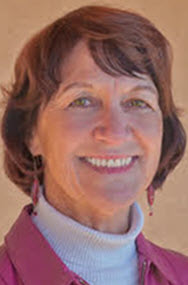
By Mary McPhail Gray
Board Chair
“And you were really snoring deeply!” declared the wife of a TBH client in delight. Not the kind of message most wives might give to their spouse! But in this case, her husband experienced the first deep restful sleep he had had in 20 years.
The reason? He had just experienced his first Eye Movement Desensitization and Reprocessing (EMDR) therapy session at Taos Behavioral Health to deal with an old work-related injury. And yes—clients often have immediate changes in their processing of traumatic memories and other negative life experiences when they are treated with EMDR.
EMDR is a relatively new tool in the clinical practice—developed in 1989 by Dr. Francine Shapiro for treatment of traumatized clients. Dr. Shapiro was walking through sun dappled woods when she realized that her negative emotions were lessening as her eyes darted from side to side. She wondered if the same positive effect might occur in her patients. She found it was true when she tried it in her practice.
Dr. Shapiro developed a specific 8 step protocol to be used first of all with PTSD clients and gradually with a variety of psychological problems including addictions, panic attacks, eating disorders, depressions, physical assault, rape, accidents and military combat. It is now officially recognized as an effective form of treatment for trauma by the American Psychiatric Association, the World Health Association and the Department of Defense.
This fall, Steve Moser, LISW and experienced clinician at TBH recruited a “wonderful caring trainer” from Albuquerque to provide two weekends of training for 18 clinicians in Taos. Eight were from TBH and the remainder from Golden Willow, Youth Heartline and CAV.
The physical body naturally moves to heal itself—from cuts and bruises and illnesses and physical injuries. The human condition is marked by a natural propensity to heal—unless the trauma is repeated again and again. EMDR is a technique that shows the brain also has an ability to move toward integrative healing.
The actual therapy is non-invasive and culturally sensitive and appears to support changes by accessing the portion of the brain that processes rapid eye movements that occur in REM sleep. Sleep that does not move into a deep REM sleep is not healing and refreshing. When individuals have experienced some disturbing event without the ability to process and integrate the memory of the event into healing mental patterns, it tends to get “stuck” and locked up in a portion of the brain. When something triggers a memory of the event, the whole body reacts with the intense trauma and emotions of that time. We usually experience negative evaluations of ourselves and have no coping skills. We go back to “the place of the trauma.”
Moser comments that EMDR seems especially powerful in Taos—where the level of poverty, historic trauma and cultural conflicts are “stunning.” And healing trauma by “telling a stranger your secrets” is not an acceptable model for many residents. But EMDR allows you a gentle path to achieve your own healing and deep relaxation in a safe place.
During the 8 steps of the process, a client and therapist identify the event/memory which causes psychological pain. It may be far in the past—as in veterans’ memories of combat—or a relatively recent. The clinician guides the client through a discussion of different techniques to handle emotional distress to use during and between the sessions.
A visual image related to the memory is then encouraged and a negative belief about the self and related body sensations and emotions are identified. The clinician then guides the client to follow the clinician’s moving finger back and forth bilaterally while holding these negative images. After this process the two evaluate how the client is feeling when they let their mind go blank. When they feel no distress, the client is encouraged to reframe the event in a positive way.
The receptionists in the TBH entrance comment that when they see a client emerge from an EMDR training—they look happy and amazingly relaxed –sometimes sitting a while to center their energy and integrate their changes. Moser comments that the clients themselves tell him when they feel successful and no longer in need of therapeutic sessions. He has often treated first responders who deal with trauma on a daily basis in their work. But he has seen it impact sleep disorders, divorce trauma and childhood fears. It is a resource we offer to our community to support healing journeys.
Contact us at 575-758-4297, 105 Bertha St. or www/taosbehavioralhealth.org.
TBH has the largest licensed and credentialed behavioral health professionals in northern New Mexico.
Mary McPhail Gray is the board chair of TBH and can be reached at 575-779-3126 and mcphailconsulting@gmail.com

